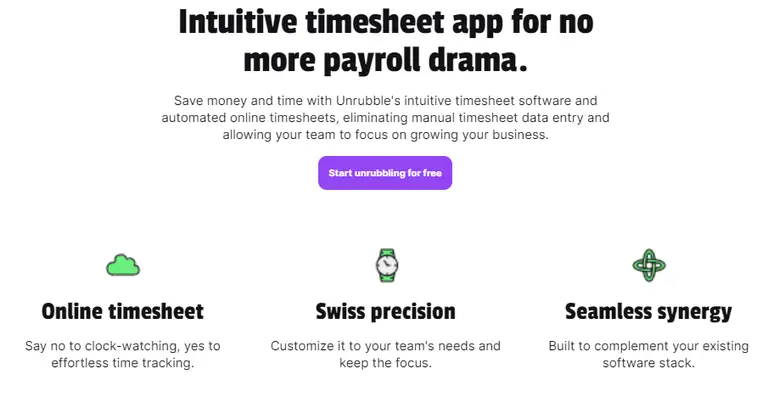Are you sure you're paying your team fairly for their extra hours?
Understanding the rules and calculating overtime can be confusing.
This guide will explain what you need to know about overtime pay. This way, your payroll will always be correct and your employees will be rewarded for their hard work.
Let's learn how to calculate overtime and pay your team properly:
What is overtime? Employer perspective

Have you ever wondered what happens when employees work extra hours? That's overtime. It's all about the hours they work beyond their regular schedule. For most jobs, this means working over 40 hours a week.
In the US, the Fair Labor Standards Act (FLSA) has set the rules for overtime. It’s the law that makes sure employees get fair treatment. Under the FLSA, workers should get paid extra, known as the overtime premium, for every overtime hour they work. The rate of pay for overtime is typically one and a half times the regular hourly wage. For example, if an employee usually makes $10 an hour, their overtime rate would be $15 per hour.
But how do you calculate overtime?
It’s pretty straightforward. First, check how many hours someone worked in a week. If they worked more than 40 hours, those extra hours are overtime hours. Multiply those by the overtime rate, and you’ll see how much you should pay in overtime pay.
There are also overtime rules for different types of pay. If someone's on a salary basis, they might still be eligible for overtime, depending on how much they make and their job duties. Even bonuses, like a flat sum bonus, can affect the total pay and how the overtime is calculated.
An overtime calculator can help you figure out exactly what you should pay. You just need to input the hourly wage, the number of hours worked, and any bonuses.
Overtime laws exist so that employees aren't taken advantage of. These regulations protect their right to fair compensation, whether they earn hourly wages or a weekly salary. It's key to know these rights and understand how overtime is calculated so you can make sure you pay your employees the correct sums.
How does overtime work? Employer perspective

Now, here's where the terms "exempt" and "non-exempt" come in.
These terms are about whether you can get overtime pay or not.
Non-exempt employees are usually paid by the hour and must receive overtime pay for any overtime hour they work. This group includes many workers who get paid at least the minimum wage and keep track of their hours.
If you have a non-exempt employee, calculating their overtime pay is straightforward. You count their overtime hours and multiply them by the overtime rate, which is the regular pay rate plus one half of that rate. For example, if they make $10 an hour, their overtime rate is $15 per hour.
Exempt employees, on the other hand, usually get a set salary and don’t get extra pay for overtime hours. These jobs often involve more responsibilities or certain types of work, like managing others or professional roles.
If you're employing an exempt worker, they might work more than 40 hours in a regularly recurring period without extra pay. That's because their salary is meant to cover all their work hours, no matter how many.
Knowing whether your employees are exempt or non-exempt helps you understand their pay.
Non-exempt workers can look forward to extra pay for those long hours, while exempt workers know that their salary covers all their work time.
Different types of overtime: employee perspective

There are different types of overtime.
Standard overtime
This is the most common type. You work more than your regular hours and get paid one and a half times your usual rate.
Example: You usually work 40 hours a week at $10 an hour. One week, you work 45 hours. For those 5 extra hours, you get paid $15 an hour for every hour worked.
Comp time
Instead of extra pay, you get extra time off. Comp time is more common in public sector jobs.
Example: You work 8 extra hours this week. Instead of getting paid overtime, you get 8 hours of future time off.
Voluntary overtime
You choose to work extra hours, and it's not required by your employer. You still get the overtime pay rate.
Example: Your boss asks if anyone wants to work an extra shift on Saturday. You volunteer and get paid overtime for those hours.
Time off in lieu
Similar to comp time but more flexible. You work extra hours now and take time off later.
Example: You work 4 extra hours this week and take 4 hours off next week to go to a doctor’s appointment.
Double time overtime
You get paid twice your regular hourly rate, often for working holidays or weekends.
Example: You work on a public holiday. If you usually make $12 an hour, you get $24 an hour for that day.
Holiday overtime
You work on a holiday and get extra pay, which can sometimes be double time.
Example: You work on Christmas Day and get paid double your usual rate. If you normally earn $15 an hour, you make $30 an hour for that day.
Each type of overtime has its own perks and rules, and so it's important to know how they work.
How to find out how much your overtime is paid: step by step

Let’s walk through how to figure out how much your overtime is paid.
1. Find your status: exempt vs non-exempt
First, you need to know if you’re exempt or non-exempt. This affects whether you get overtime pay. Check your job description or ask HR. If you're non-exempt, you qualify for overtime. Exempt employees usually have a fixed salary and don’t get paid extra for overtime hours.
Practical tip: Look at your pay stub. If you see an hourly rate and overtime section, you're likely non-exempt.
2. Find out your weekly hours
Track how many hours you work each week. Anything over 40 hours usually counts as overtime.
Practical tip: Use a time tracking app or a simple notebook to jot down your daily hours. This helps you keep an accurate record.
3. Determine your rate of pay by the hour
Know your regular hourly rate. If you’re salaried, divide your weekly salary by the number of hours you’re expected to work.
Practical tip: If you’re not sure about your hourly rate, check your pay stub or employment contract.
4. Find your employer's overtime pay rate
Most employers pay one and a half times your regular rate for overtime. Confirm this with your employer or HR department.
Practical tip: This info is often in the employee handbook or company policies.
5. Calculate your overtime hours pay
Multiply your overtime hours by the overtime pay rate. For example, if you worked 5 overtime hours and your regular rate is $10, you’d get $15 per overtime hour. So, 5 hours x $15 = $75 in overtime pay.
Practical tip: Use an overtime calculator online to double-check your math. Just enter your hourly rate and overtime hours.
Following these steps helps you understand how much you’re earning from those extra hours. It's always good to know exactly what to expect on your paycheck.
Calculate overtime pay easily with Unrubble
Calculating overtime pay can often feel like a complicated task, but with Unrubble, it’s a piece of cake.

Both employers and employees benefit from our user-friendly tools.
Here’s why Unrubble makes the process simple:
Automatic time tracking
Unrubble’s time tracking feature logs your hours in real-time, so you always have an accurate record of how many hours you’ve worked. This eliminates the guesswork and manual entry errors.
Built-in overtime calculator
We equip you with a handy overtime calculator. Just input your hourly rate and the number of overtime hours, and it will instantly show you how much extra pay you should receive. No need to fumble with complicated formulas.
Clear rate display
Your regular and overtime rates are clearly displayed in your Unrubble profile. Thanks to this transparency, you know exactly what you’re earning, all so it's easier to plan your finances.
Comprehensive reporting
Unrubble’s reporting tools give you a detailed breakdown of your work hours, including regular and overtime hours. This makes it simple to review your total pay and verify that everything is correct.
Mobile convenience
With Unrubble’s mobile app, you can track your hours and calculate overtime pay on the go. Whether you’re at home or on a business trip, Unrubble keeps everything at your fingertips.
Switching to Unrubble takes the headache out of overtime calculations. It’s straightforward, accurate, and makes your work life easier. Start using Unrubble for free today and see the difference in managing your overtime pay.






